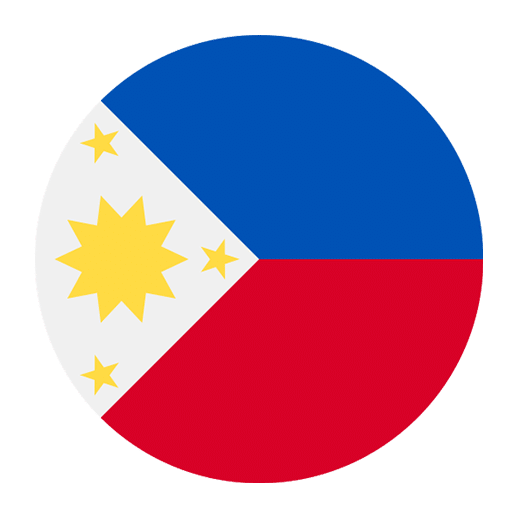Learning a new language is an exciting journey, and one of the most enjoyable parts of this journey is expanding your vocabulary. For English speakers diving into Tagalog, one practical area to focus on is vocabulary related to beverages. Whether you’re traveling to the Philippines, dining at a Filipino restaurant, or simply expanding your linguistic horizons, knowing how to describe different types of beverages in Tagalog can be incredibly useful. In this article, we will explore the vocabulary for various beverages, from everyday drinks to traditional Filipino concoctions.
Basic Beverage Vocabulary
To start, let’s go over some basic terms that will be essential when discussing beverages in Tagalog.
– **Water**: Tubig
– **Drink/Beverage**: Inumin
– **Hot**: Mainit
– **Cold**: Malamig
– **Sweet**: Matamis
– **Bitter**: Mapait
– **Sour**: Maasim
These basic words will help you describe the temperature and taste of different beverages. Now, let’s dive into specific categories of drinks.
Non-Alcoholic Beverages
Non-alcoholic drinks are a staple in any culture, and the Philippines is no exception. Here are some common non-alcoholic beverages you might encounter.
– **Juice**: Katas or Dyus
– **Milk**: Gatas
– **Coffee**: Kape
– **Tea**: Tsaa
– **Soda**: Soda or Soft drink
– **Smoothie**: Smudi
Types of Juice
Juices are popular in the Philippines, especially those made from tropical fruits. Here are some specific types of juice:
– **Orange Juice**: Katas ng dalandan
– **Mango Juice**: Katas ng mangga
– **Pineapple Juice**: Katas ng pinya
– **Calamansi Juice**: Kalamansi juice (Calamansi is a local citrus fruit similar to lime)
– **Guava Juice**: Katas ng bayabas
Milk and Dairy-Based Drinks
Milk and dairy-based beverages are also common in Filipino cuisine. Here are some examples:
– **Chocolate Milk**: Gatas na tsokolate
– **Milkshake**: Gatas na may yelo or Milkshake
– **Yogurt Drink**: Inuming yogurt
Coffee and Tea
Coffee and tea culture is also prevalent in the Philippines. Here are some specific types you might encounter:
– **Black Coffee**: Kape na itim
– **Coffee with Milk**: Kape na may gatas
– **Iced Coffee**: Kape na malamig
– **Herbal Tea**: Tsaa na herbal
– **Green Tea**: Tsaa na berde
– **Milk Tea**: Tsaa na may gatas or Milk tea
Traditional Filipino Beverages
The Philippines boasts a rich tradition of unique beverages that are deeply rooted in its culture. Here are some traditional Filipino drinks you should know:
Non-Alcoholic Traditional Beverages
– **Sago’t Gulaman**: A refreshing drink made from sago (similar to tapioca pearls) and gulaman (gelatin) mixed with brown sugar syrup and ice.
– **Buko Juice**: Fresh coconut water, often served straight from the coconut, known locally as buko.
– **Salabat**: A traditional ginger tea, often consumed for its health benefits.
– **Taho**: A sweet snack drink made from soft tofu, arnibal (a sweet syrup), and sago pearls.
Alcoholic Beverages
The Philippines also has a variety of alcoholic beverages that are popular among locals and tourists alike. Here are some examples:
– **Beer**: Serbesa or Beer
– **Wine**: Alak or Bino
– **Rum**: Rhum
– **Gin**: Ginebra
– **Tuba**: A traditional Filipino wine made from the sap of palm trees.
– **Lambanog**: A potent distilled coconut liquor, often referred to as “coconut vodka.”
Describing Beverages
Now that you have a solid foundation of beverage vocabulary, let’s move on to describing these beverages in Tagalog. Being able to describe what you’re drinking can add depth to your conversations and help you connect more with the local culture.
– **Delicious**: Masarap
– **Refreshing**: Nakakarelax or Nakapresko
– **Healthy**: Masustansya
– **Strong (alcoholic)**: Malakas
– **Light (alcoholic)**: Magaan
For example:
– “This mango juice is delicious.” – “Masarap ang katas ng mangga na ito.”
– “I find buko juice very refreshing.” – “Nakakapresko ang buko juice para sa akin.”
– “Salabat is very healthy.” – “Masustansya ang salabat.”
– “This lambanog is very strong.” – “Napakalakas ng lambanog na ito.”
– “I prefer light beer.” – “Mas gusto ko ang magaan na serbesa.”
Ordering Beverages
Knowing how to order beverages in Tagalog is essential, especially if you are visiting the Philippines. Here are some useful phrases:
– **I would like to order…**: Gusto kong umorder ng…
– **Can I have…**: Puwede bang makahingi ng…
– **How much is…**: Magkano ang…
– **Do you have…**: Mayroon ba kayong…
For example:
– “I would like to order a coffee.” – “Gusto kong umorder ng kape.”
– “Can I have a glass of water?” – “Puwede bang makahingi ng isang basong tubig?”
– “How much is the milk tea?” – “Magkano ang milk tea?”
– “Do you have orange juice?” – “Mayroon ba kayong katas ng dalandan?”
Common Beverage-Related Phrases
Here are some additional phrases that might come in handy when discussing or ordering beverages:
– **Without sugar**: Walang asukal
– **Less ice**: Konting yelo
– **More ice**: Dagdagan ng yelo
– **To go**: Para sa labas
– **For here**: Para dito
For example:
– “I would like my coffee without sugar.” – “Gusto ko ng kape na walang asukal.”
– “Can I have my soda with less ice?” – “Puwede bang konting yelo lang ang ilagay sa soda ko?”
– “I want my drink to go.” – “Gusto ko ng inumin para sa labas.”
– “For here, please.” – “Para dito, paki.”
Conclusion
Expanding your vocabulary to include terms related to beverages can greatly enhance your Tagalog language skills. Whether you’re ordering a refreshing buko juice at a local stand, enjoying a traditional cup of salabat, or simply discussing your favorite drinks with friends, having the right words at your disposal will make your experiences more enriching and enjoyable.
Remember, the key to mastering any new language is practice. So go ahead, order that kape na may gatas, and enjoy the journey of learning Tagalog!

